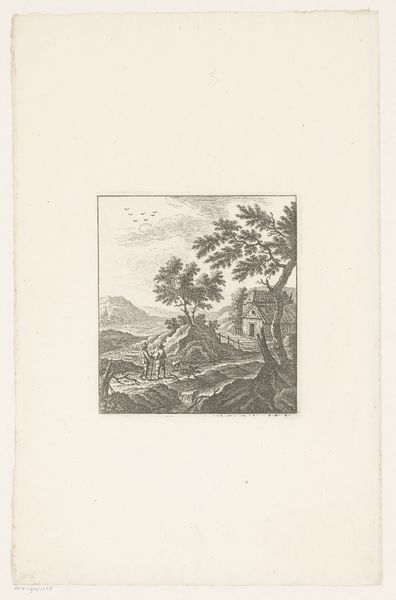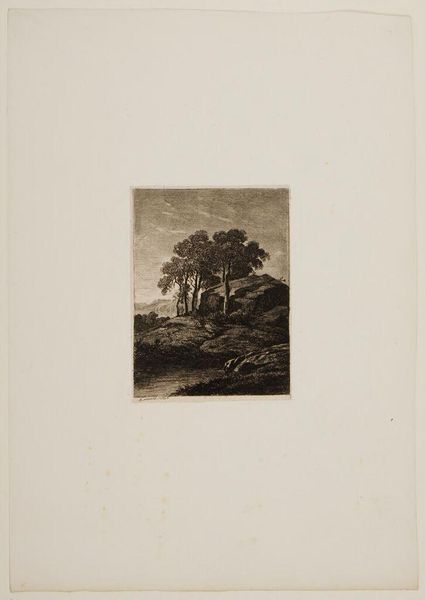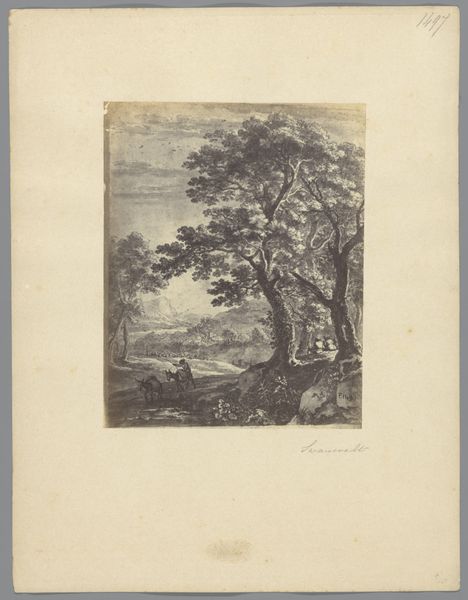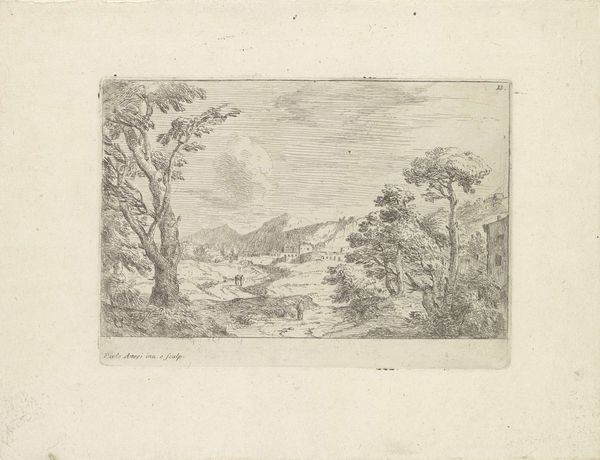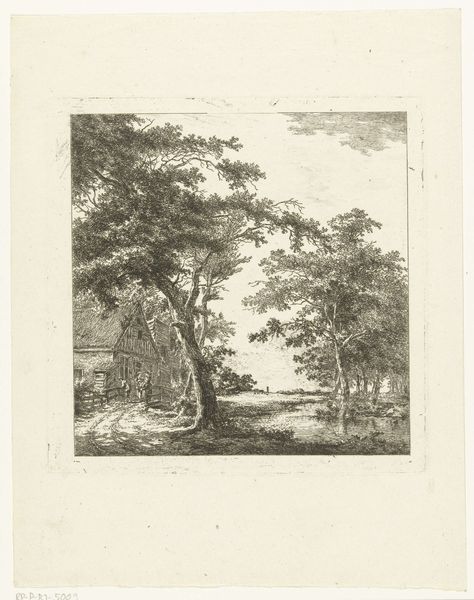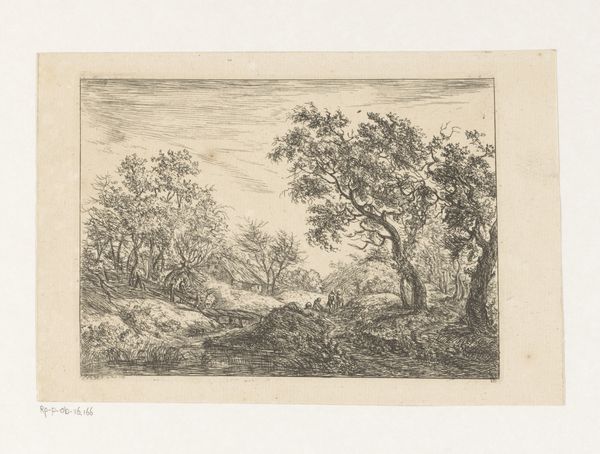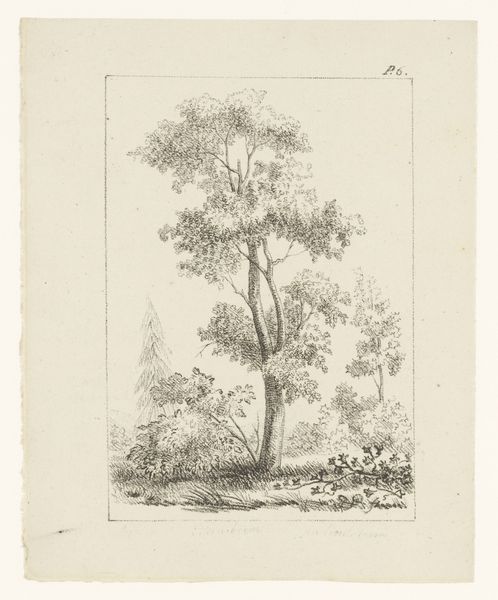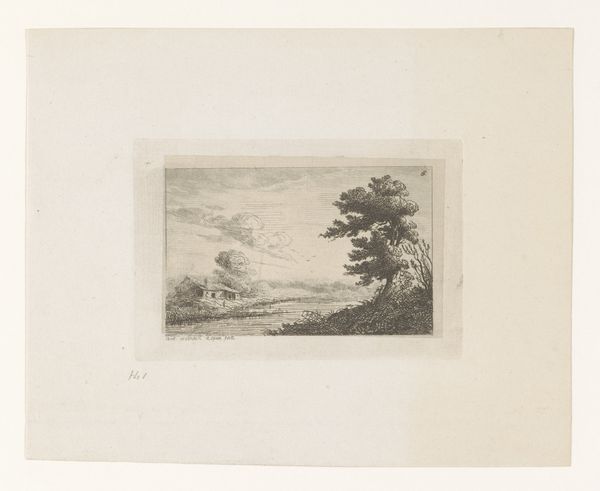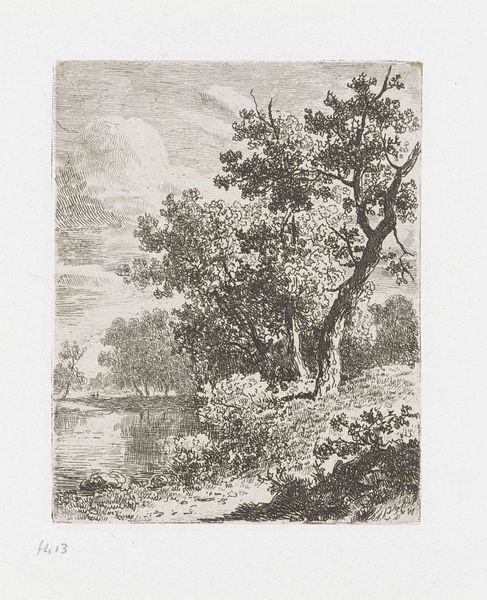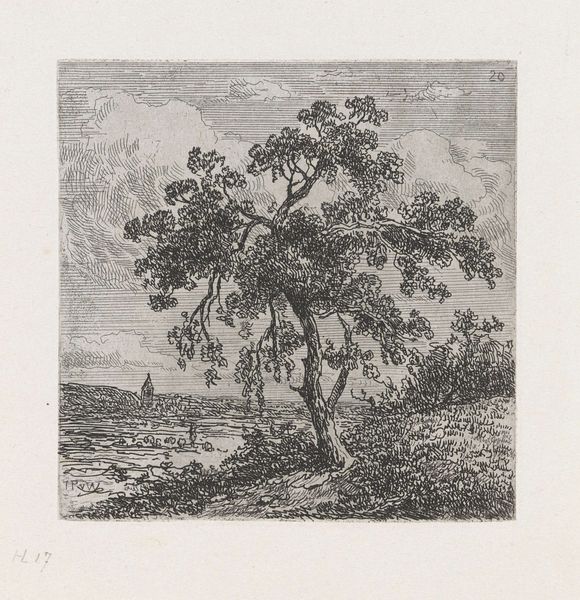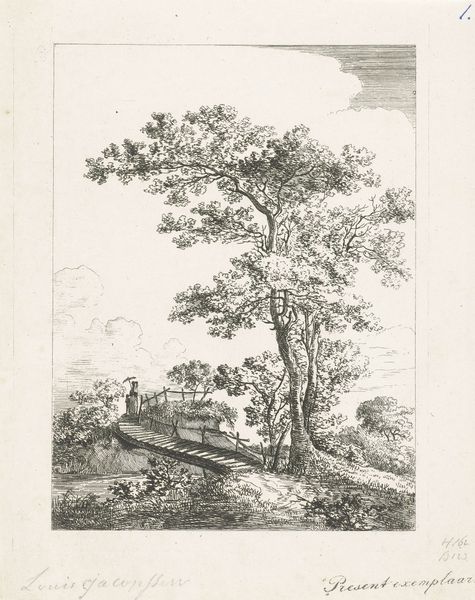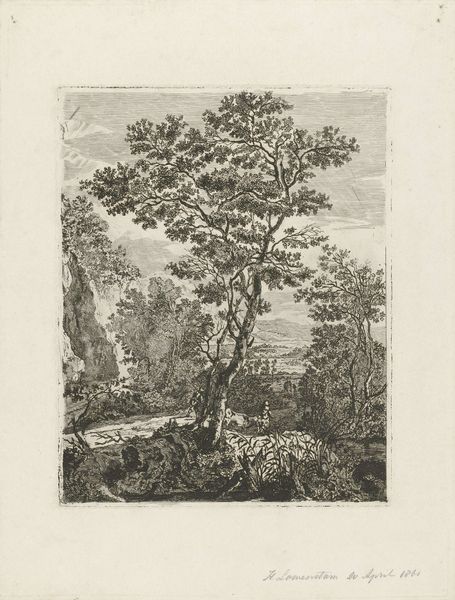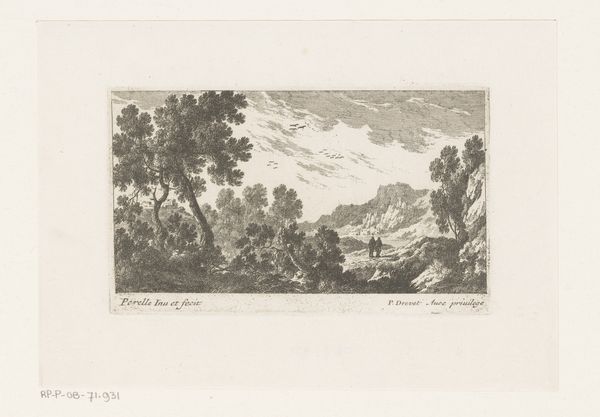
drawing, print, paper, engraving
#
drawing
#
lake
#
baroque
# print
#
landscape
#
paper
#
mountain
#
line
#
engraving
Dimensions: height 141 mm, width 129 mm
Copyright: Rijks Museum: Open Domain
Johann Caspar Ulinger made this small etching of a mountain lake in the mid-18th century. Etching is an indirect process, requiring patience and skill. Ulinger would have coated a copper plate with wax, then scratched his design through this resist. The plate was then immersed in acid, which ate away at the exposed metal. This created incised lines, which would hold ink. After cleaning the plate, he would have forced ink into these lines, wiped the surface clean, and then pressed paper against the plate to make the print. Consider the relationship between the delicate lines of the etching and the scene depicted. Ulinger captured the soft gradations of light across the water and distant mountains with the subtlest of means. His labor-intensive process transformed base metal into an object of beauty, demonstrating how craft can elevate the everyday. It reminds us that even in the age of mechanical reproduction, the hand's touch remains essential.
Comments
No comments
Be the first to comment and join the conversation on the ultimate creative platform.
